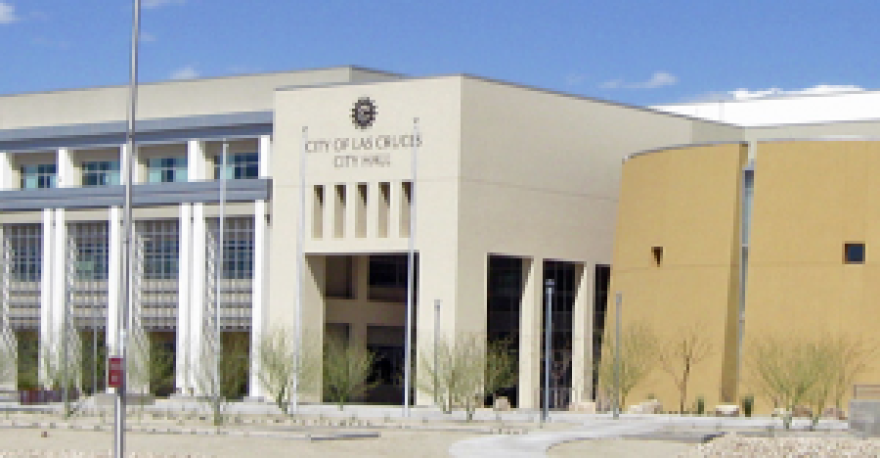Commentary: The 2018 National Drive Electric Week (#NDEW2018) took place during September 8-16, 2018. There were 322 events in various cities in the USA and Canada. Las Cruces was on the map of events, with a workshop held at the Southwest Environmental Center. September 8, 2018, was the day chosen for that event, because it coincided with nationwide actions in preparation for the Global Climate Action Summit (#GCAS2018) on September 12-14, 2018 in San Francisco, CA.
The event in Las Cruces was led by local author and environmental advocate John Gilkison. The primary focus was on the adoption of electric cars as a way that individuals can act now, or in the near future, to lessen our environmental and climatological impact. An issue that emerged in the public discussion was the reluctance of the City of Las Cruces leadership to start adding electric cars to its fleet. This has led to a shift in the focus of our efforts. We now wish to press the City of Las Cruces to advance their pro-environmental efforts. The City already has made substantial progress in this regard. They should go further, and faster. Adoption of electric cars would be a good next step.
Mr. Gilkison has already published a Commentary here at KRWG (Las Cruces Should Adopt Electric Vehicles, By John Gilkison, Oct 3, 2018) Mr. Gilkison’s essay showed, with mathematical precision, exactly how greatly the adoption of electric vehicles can benefit the environment. He showed also how great the economic advantages can be.
Today’s editorial is focused on the potential health benefits of reductions in air pollution. This is an issue separate from the climatological benefits and economic benefits. It is important for people to understand all three, in order to understand more fully the case for more widespread use of electric vehicles.
Air pollution is widely considered to be an important cause of premature death around the World. According the the State of Global Air/2018 report, air pollution consisting of fine particles causes about 4 million premature deaths per year worldwide. Ozone causes another 2 million. Global Health Observatory (GHO) data from 2016 indicate that air pollution contributes to 7.6% of deaths.
The GHO data set indicates that disability-adjusted life years (DALYs) lost in the USA are 516 per 100,000 persons per year. With a current US population of 325 million, that comes to 1,677,000 DALYs lost per year. An MIT study in 2013, looking only at the USA, concluded that there are about 200,000 excess premature deaths attributable to air pollution. The study further indicated that vehicle emissions are the biggest contributor to these premature deaths.
A study published in the New England Journal of Medicine in 2017 described an analysis of mortality data for the US Medicare Population. That study found the following:
Increases of 10 μg per cubic meter in PM2.5 and of 10 ppb in ozone were associated with increases in all-cause mortality of 7.3% (95% confidence interval [CI], 7.1 to 7.5) and 1.1% (95% CI, 1.0 to 1.2), respectively...For PM2.5, the risk of death among men, blacks, and people with Medicaid eligibility was higher than that in the rest of the population.
A 2016 study by the World Bank and the Institute for Health Metrics and Evaluation, The Cost of Air Pollution: Strengthening the Economic Case for Action, addressed the financial aspects of the disease burden imposed by air pollution, and considered the cost of remediation. That study reported the following:
Every year, the U.S. Office of Management and Budget (OMB) reports to Congress on the costs and benefits of federal regulations. OMB has consistently found that rules issued by the U.S. Environmental Protection Agency (EPA) to improve air quality are the most economically beneficial of all federal regulations. Indeed, OMB estimates that EPA regulations issued between 2004 and 2014 to limit air pollution generated between $157 billion and $777 billion (constant year 2010 prices) in benefits to the American economy, mainly by reducing the public health risks of exposure to fine particulate matter (OMB 2015). Implementing these rules costs between $37 billion and $44 billion, meaning the benefits have outweighed the costs by a ratio of at least 4 to 1.
The report also states:
Emissions from transport can be an important source of ambient air pollution, and health impacts related to transport emissions can be substantial. Hill et al. (2009) have estimated that the health costs of gasoline produced and consumed in the United States are on the order of $0.36 per gallon
While it is true that the carbon emissions associated with the manufacture of an electric vehicle are greater than for an internal combustion-powered car, the lifetime emissions are far lower. This was shown in a report, Cleaner Cars From Cradle to Grave, published by the Union of Concerned Scientists, in 2015.
The escalating cost of healthcare affects us all. We now have a simple and direct way to reduce those costs.
Although the largest favorable impacts can be generated by international and national standards and actions, progress there has been slow. In some cases, we have seen retrogression. Therefore, the time has come for action on individual, state, and local levels. Once we start locally and show the benefits, momentum will build. The City of Las Cruces has an opportunity to lead the way.


